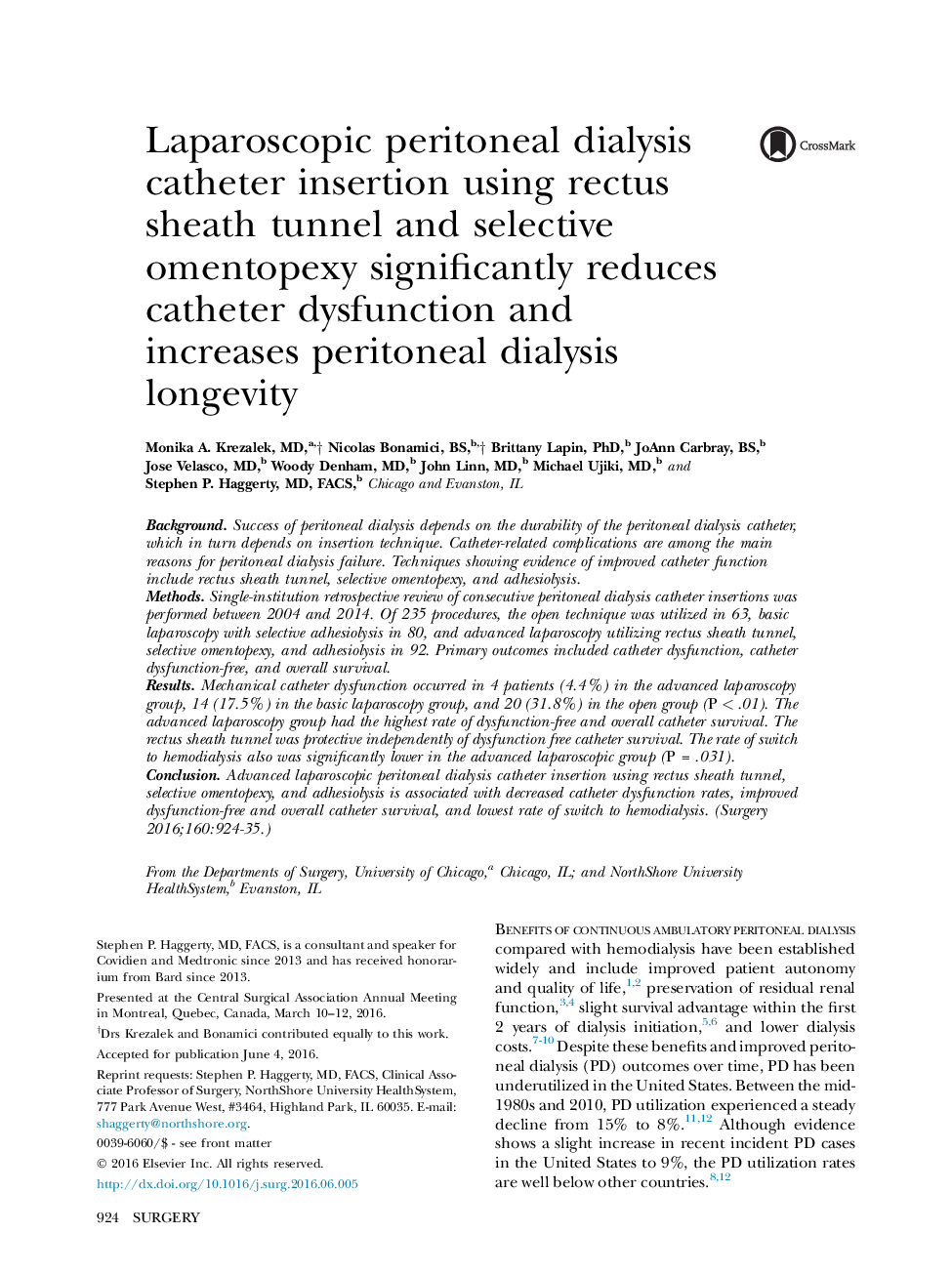| کد مقاله | کد نشریه | سال انتشار | مقاله انگلیسی | نسخه تمام متن |
|---|---|---|---|---|
| 4306352 | 1411843 | 2016 | 12 صفحه PDF | دانلود رایگان |
BackgroundSuccess of peritoneal dialysis depends on the durability of the peritoneal dialysis catheter, which in turn depends on insertion technique. Catheter-related complications are among the main reasons for peritoneal dialysis failure. Techniques showing evidence of improved catheter function include rectus sheath tunnel, selective omentopexy, and adhesiolysis.MethodsSingle-institution retrospective review of consecutive peritoneal dialysis catheter insertions was performed between 2004 and 2014. Of 235 procedures, the open technique was utilized in 63, basic laparoscopy with selective adhesiolysis in 80, and advanced laparoscopy utilizing rectus sheath tunnel, selective omentopexy, and adhesiolysis in 92. Primary outcomes included catheter dysfunction, catheter dysfunction-free, and overall survival.ResultsMechanical catheter dysfunction occurred in 4 patients (4.4%) in the advanced laparoscopy group, 14 (17.5%) in the basic laparoscopy group, and 20 (31.8%) in the open group (P < .01). The advanced laparoscopy group had the highest rate of dysfunction-free and overall catheter survival. The rectus sheath tunnel was protective independently of dysfunction free catheter survival. The rate of switch to hemodialysis also was significantly lower in the advanced laparoscopic group (P = .031).ConclusionAdvanced laparoscopic peritoneal dialysis catheter insertion using rectus sheath tunnel, selective omentopexy, and adhesiolysis is associated with decreased catheter dysfunction rates, improved dysfunction-free and overall catheter survival, and lowest rate of switch to hemodialysis.
Journal: Surgery - Volume 160, Issue 4, October 2016, Pages 924–935
